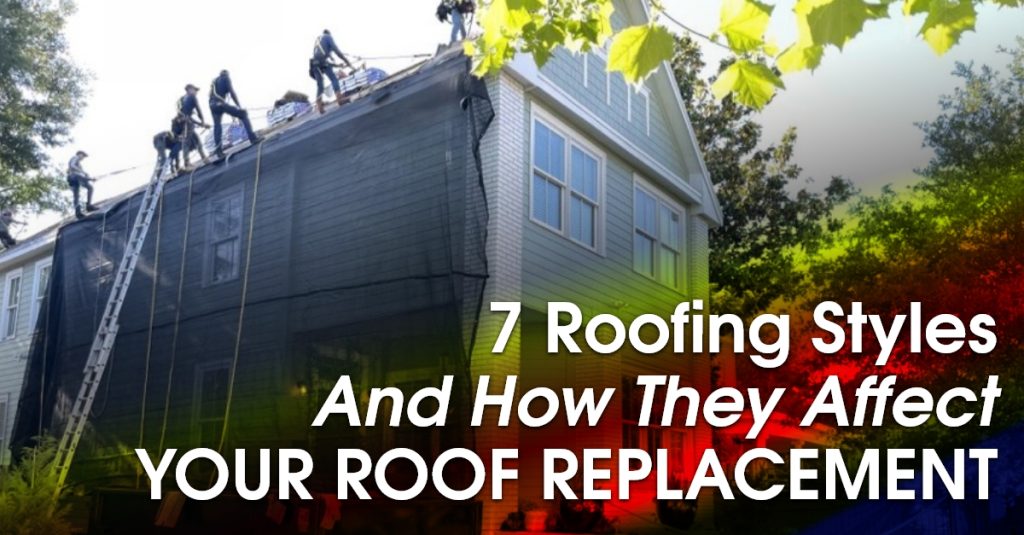Jacksonville endured a horrific conflagration at the turn of the 20th century, the Great Fire of 1901. One positive outcome: the necessary reconstruction allowed new architectural styles to flourish. Prairie Style architect Henry John Klutho, a Jacksonville resident, influenced a lot of the rebuilding. Every architectural style can be connected to a particular roof profile.
Roof Profiles
Roofers are completely familiar with the various configurations of roof profiles possible. Just a brief sampling shows the variety:
- Box gable
- Saltbox
- Open gable
- Low-slope
- Dormer
- Hip
- Hip and Valley
- Gambrel
- Mansard
- Dutch Gable
- Jerkinhead
- Cross Hipped
Most of these terms will mean little to the typical Jacksonville homeowner. With the exception of low-slope roofing, however, nearly all the styles of roofs found in Jacksonville can be successfully roofed with sturdy, economical asphalt shingles expertly installed by a local roofer.
Many of these roof profiles are associated with particular architectural styles dating back over a hundred years.
1. Colonial Revival
Jacksonville’s rebuilding period coincided with the nation’s passion for Colonial Revival architecture. This style features hip-and-valley roofs with many dormers, high chimneys, and stately columns. These attractive roofs are ideal for real crowning eye-catchers, such as GAF High Definition architectural shingles, which add drama, strong shadows, and varying tones to your roof.
2. Queen Ann
Jacksonville is fortunate to have a few examples of pre-Civil War architecture, such as a residence on Lydia Street that dates roughly to the 1850s. Though a simple farmhouse, this gem shows touches of Queen Ann elegance.
Roofs on Queen Ann homes feature steep pitches, cross gables, and large dormers. These complement the extensive fretsaw decoration found in the vergeboards. Such roofs are ideal candidates for sturdy, attractive asphalt shingles which fit snugly onto any surface. Many homeowners of Queen Ann masterpieces choose bright colors for their shingles, since the roofs are a prominent feature.
3. Second Empire
Jacksonville’s Rochester House on River Boulevard—now an apartment house—still flaunts its Second Empire roots, despite modernization and expansion. The roof holds hints of the original Mansard Roof, which gives the building a “bonus” third floor.
Mansard roofs display their shingled surfaces almost like a billboard, so the careful homeowner will select a decorative cut shingle in a color to compliment the home’s exterior.
4. Prairie School
By far the most prominent style of homes built after the Great Fire of 1901 was Klutho’s Prairie School homes, noted for their low-slope roofs, cantilevered slabs, horizontality, and sparse decoration.
These low-slope roofs must be roofed with materials typically seen in commercial roofing, such as a single-ply membrane or Modified Bitumen rolled roofing. Shingles cannot shed water on low-slope roofs.
5. Victorian
Fans of turrets will always flock to Victorian homes, like those found on River Point Road. While Victorian architecture often breaks into various categories, some homes defy cubby-holing because they borrow from the dainty trim of Queen Ann, the robust Shingle style, and porch-preferring Caribbean motifs.
Your Victorian home may be a blend of Eastlake, Folk, Romanesque Revival, or Italianate. Architects working in all these styles adored their bay windows, gingerbread trim, and towers, towers, towers.
If a tower or turret tops your home, shingles are perfectly suited to the task of complete roof replacement.
Shingles are what roofers consider “unitized,” meaning each piece can be cut and placed as needed. Shingles can easily form around unusual angles or curves. Contrast that with metal panel roofing, which requires extensive planning, precise measuring and cutting, and skilled installation. Shingles can be fitted to the most elaborate Victorian turret, tower, or cupola.
6. Jacobean Revival
For a standout house in Jacksonville, you can hardly do better than a Jacobean Revival home like the one on River Boulevard. While slate often caps these stately homes with steep-pitched roofs, slate is expensive, heavy, challenging to work with, and rarely used today.
A perfectly suitable substitute for the massive heft and feel of slate can be found in GAF deep-cut shingles, which provide the same earth tones and dramatic accents. The thickness of these heavier shingles provides the light and shadow needed to help show off the Jacobean Revival style.
7. Spanish
From the “Marble House” in Avondale to the Tamaya community, many homes show the Spanish influence. Their roofs are capped with barrel tiles of either ceramic or concrete. The typical Mediterranean and Spanish-inspired home has a hip-and-valley roof, with four faces angling in to meet at ridgelines.
Tiles are beautiful, yes, but they can be challenging to maintain. Consider architectural shingles expertly installed by a local residential roofer for an economical, visually striking alternative. Tiles are brittle and require specialized skills in installing and maintaining them. Asphalt shingles provide easy maintenance, low up-front cost, and quick installation.
StormForce is your #1 Jacksonville-area residential roofing contractor. Contact us today to discover all we offer you, from emergency roof repairs to complete roof replacement.
